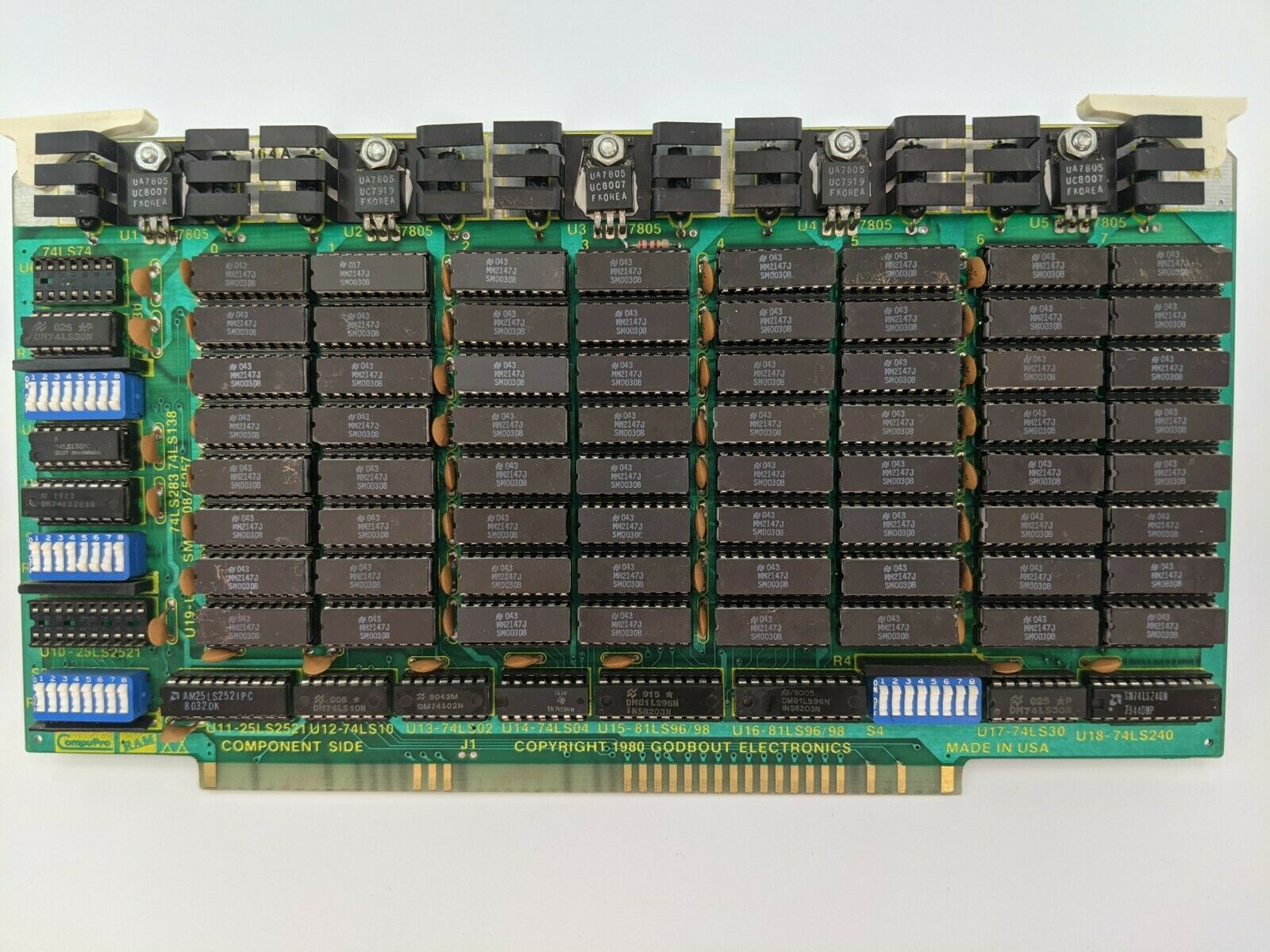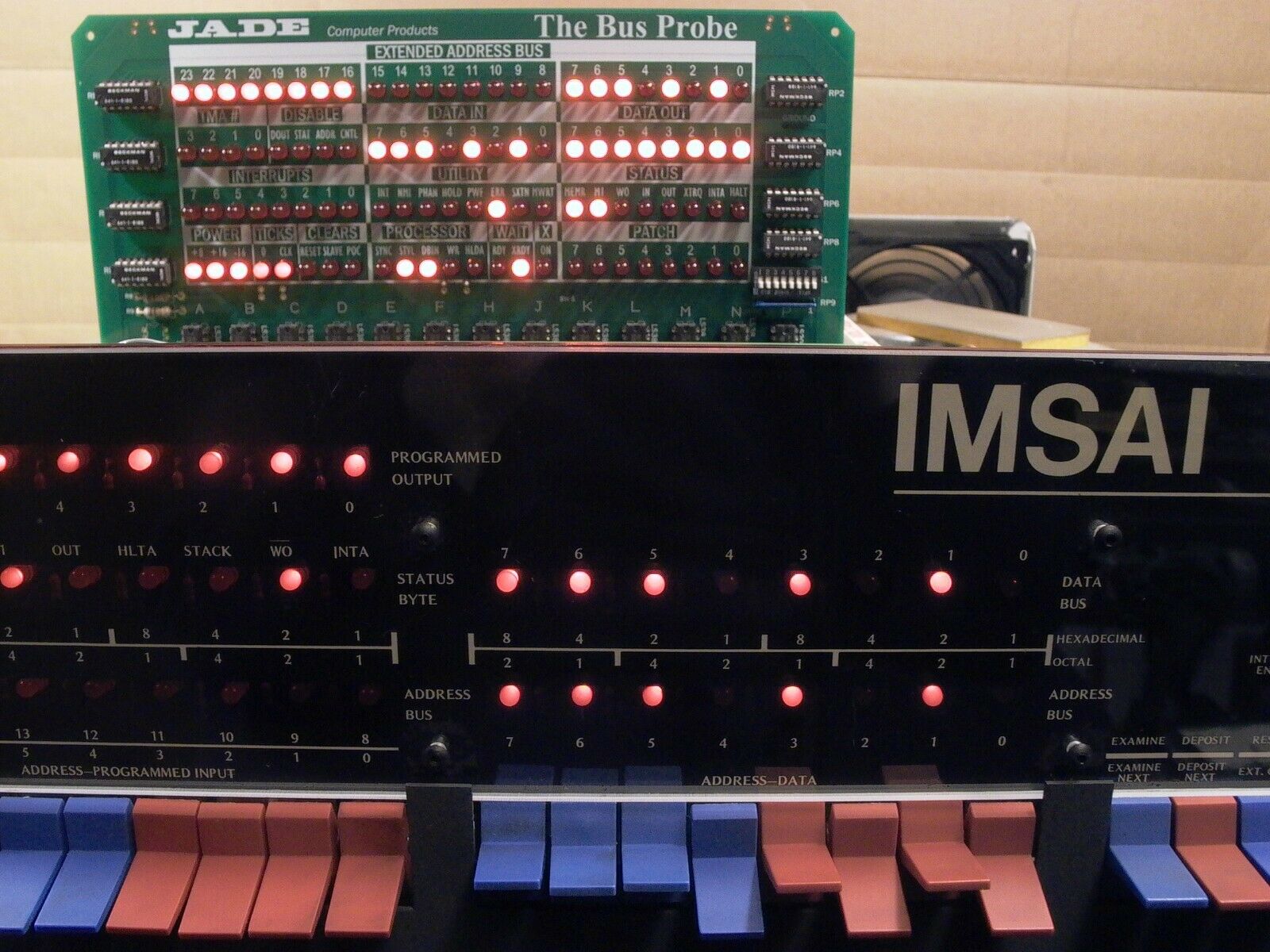Why IMSAI Here?
I know some folks are wondering why I am discussing a pair of IMSAI computers on a blog primarily about restoring Computer Automation LSI/2 16 bit mini-computers…
Well, here is my logic – both types of systems have “programmer’s” front panels that show what is happening inside the machine, and allow you to stop, start, debug, single step, and input data. Also, the Northstar Horizon and IMSAI 8080 S-100 computers were my second and third computers, in my house, (computers that I actually owned, instead of leased ). The Alpha 16 and LSI/2 minicomputers were the first computers I had possession of – even though they were leased from Computer Automation.
The second reason is that the LSI/2 and IMSAI S100 computers are actually quite similar – except for early S100 systems having an 8 bit data bus and CPU. Therefore, easing back into assembly programming is actually easier on the IMSAI 8080 and Z80 systems because there are a large number of more advanced programming tools – assemblers, debuggers, emulators, etc. that can be run on the hardware, or emulated on a more modern PC system.
Plus, both types of systems were primarily programmed in assembly language. I know, a lot of S100 systems with CP/M ran MBASIC-80 or CBASIC, but for systems programming, it was done in assembly – look at WordStar, Turbo Pascal, MBASIC-80, Modem7, Kermit, Xmodem, and other utilities. All were written in 8080 assembly.
Another bonus is that the 8080 and Z80 systems have tons more documentation readily available on the internet.
Finally, the 8080 and Z80 systems have the capability to run an Operating System – CP/M – on floppy disks or even flash or SD cards. This means that I can relearn my skills with less friction and pain, then apply them to the LSI/2 which has more a primitive work environment, at least until I can get some floppies working and disks rebuilt.
So am I backing out of the Computer Automation LSI/2 restoration? NO! In fact, since I am moving soon, I have decided I need a new place with enough space to set up all of my vintage systems and be able work on them in parallel – including the THREE LSI/2 systems I own.
IMSAI Restore continued…
So how are the IMSAI’s doing? Well, after replacing the Z80 in my Fulcrum I8080 with the Jade Z80 CPU, I was able to see some functionality from the CPU. However, depositing data and viewing memory still didn’t work correctly. However, now I could read the boot EPROM in the Jade board correctly.
Next step was to see if it was the CPU, the memory, or the CPA front panel causing issues.
I built a replica IMSAI CPU-A board with an 8080-A CPU as the simplest CPU card that should absolutely work with the front panel. It mostly ran, but I still could not write to memory. So I decided to re-chip the front panel.
By the way, it is a Fulcrum replica version of the IMSAI CPA front panel PCB in the Fulcrum branded IMSAI. This version was re-laid out (with tape) from negatives of a bare original CPA, with all of the IMSAI fixes applied. I should know – I did the tape up myself at Fulcrum in 1981. I was hoping that either corrosion or bad flip-flops or one shots was the cause of the write problem. But no luck. Time to break out the scope.
I also got some advice from the retro forums about some S100 lines that might be grounded on the Jade CPU or CompuPro memory boards that could prevent memory writes. At this point I am fairly close to being able to run code on the system. But, I had to stop work because of the pending move to a new home. More coming soon.




